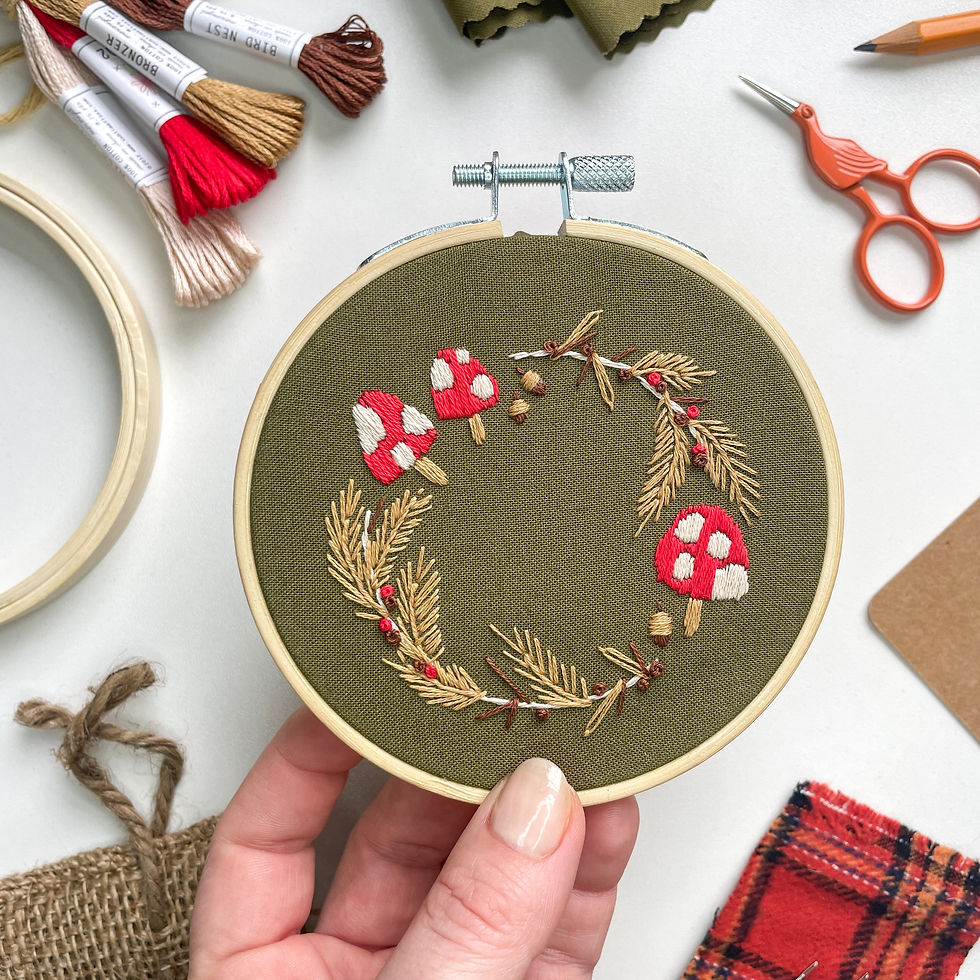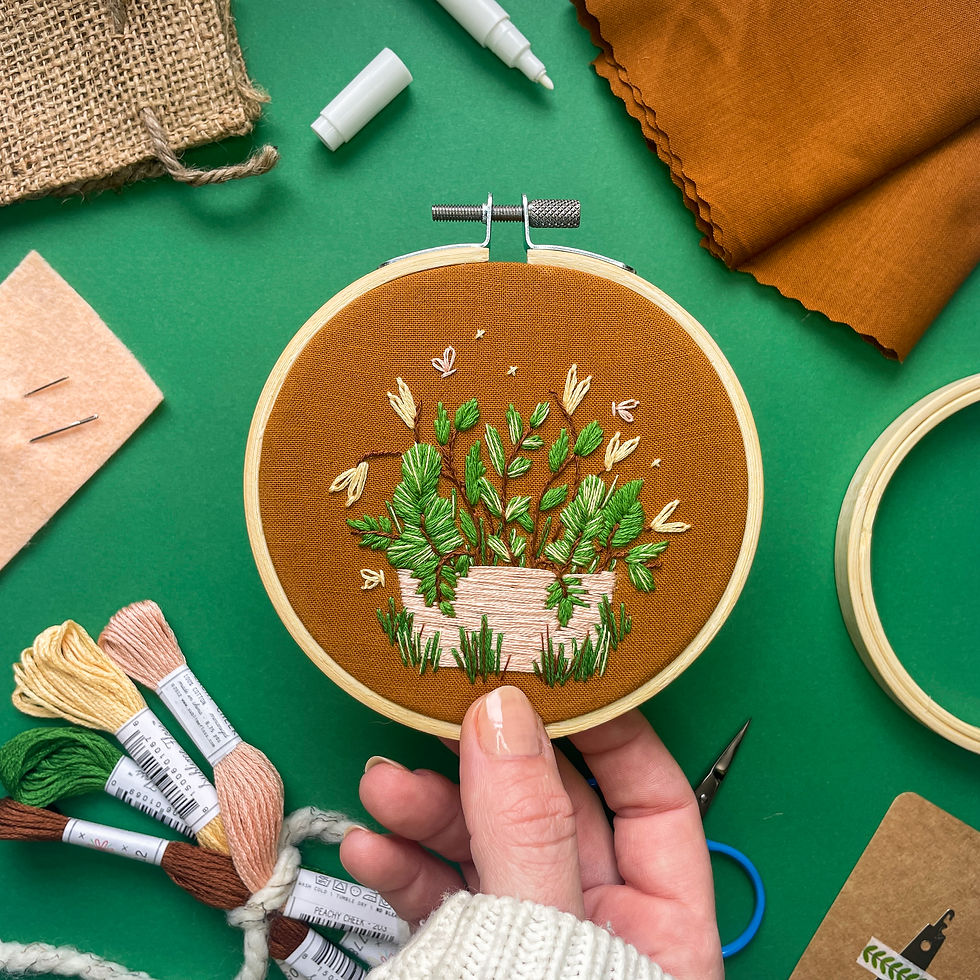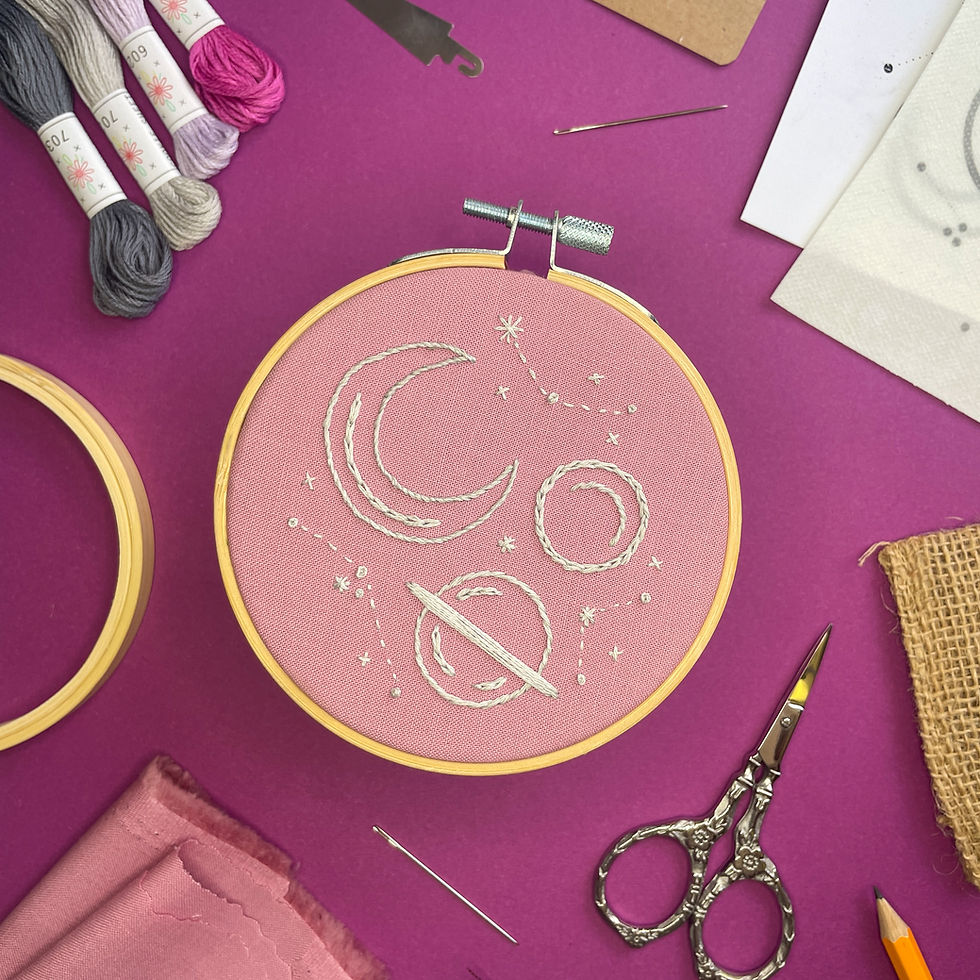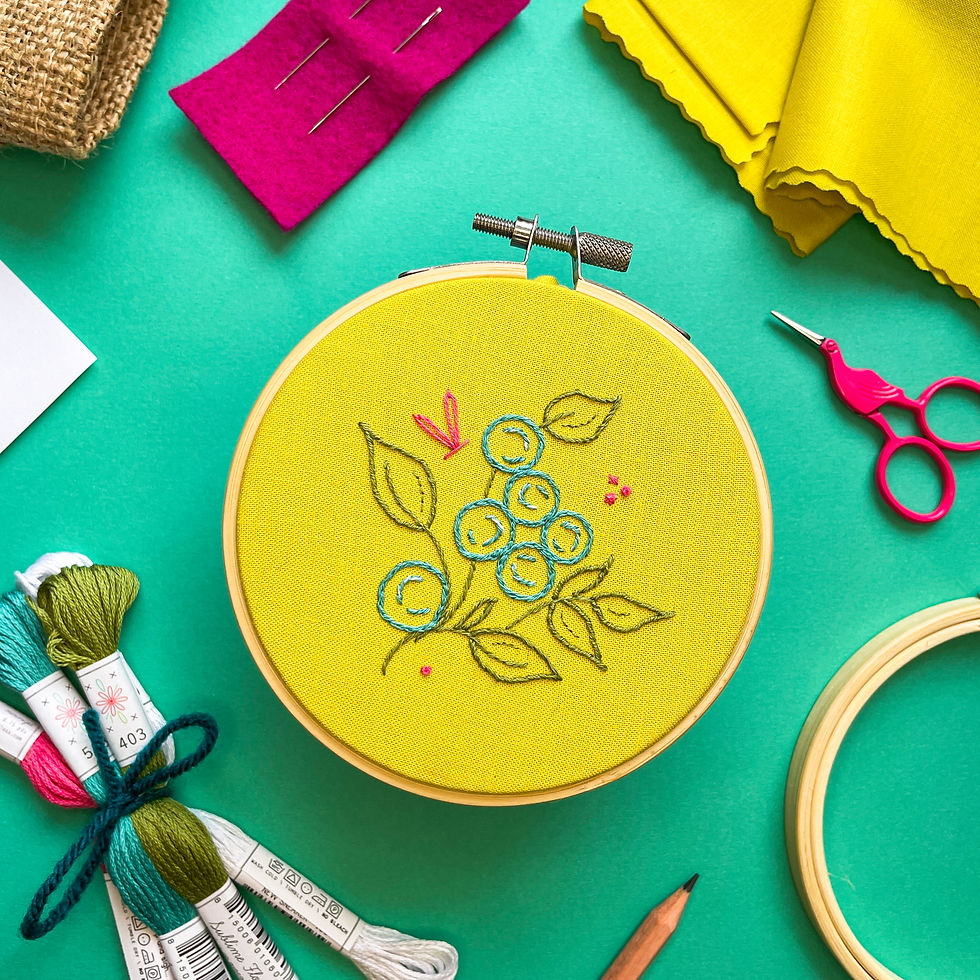The French knot is found in loads of patterns online, and is a super versatile stitch to add to your own work. If you're having difficulty with this stitch, know that I had to read and watch so many tutorials from so many resources before I finally understood what I was doing, so if you're here on a similar journey - welcome! I've been in your shoes, and I hope I can be helpful to you!
If you're right-handed, you can reference my original tutorial for this stitch, 8 Steps to Perfect French Knots. For the photo and video instructions in today's left-handed post, I've flipped my camera so that left-handed stitchers might be able to more easily learn the steps for the French knot. I hope it's helpful!
Step 1: Pull your floss through your hoop.


Step 2: Wrap your floss around your needle.
In these photos, I've wrapped my floss twice. Typically, stitchers choose to wrap their floss once, twice, or three times.



Step 3: When bringing your needle back down, go just next to the hole you've just made.
If you go through the same hole, you risk pulling your French knot straight through your fabric.

Step 4: Now that your needle is in place, make sure you're still holding your floss with one hand.
I like to hold my floss with the same hand I'm using to hold my hoop. Don't let go until you're ready to pull all the way through.

Step 5: Begin pulling your needle through your fabric, while still holding that floss.
If you let go too soon, you risk creating an accidental-knot on top of your French knot, and/or you might end up with a loose, messy French knot. Which is totally fine if that's what you're going for, but I suspect that if you're here, you're not going for that.

Step 6: As you continue to pull your needle through your fabric, you will continue to pull your floss along with it.
Make sure you're holding onto that extra floss until the last possible moment; you'll know you're at the "last possible moment" when you no longer have enough floss to hold.

Step 7: Once you no longer have a long enough piece of floss to hold, let go of your floss and quickly pull it all the way through.
You need confidence at this step! You can do this!


Step 8: Visual inspection of your incredible work!
Sometimes, even those of us who stitch thousands of French knots a year (and teach people how to do French knots) will look at our result and realize we messed up along the way. If your French knot looks off, that's totally fine! You can either leave it a bit messy, or cut it out and start again.

Video tutorial for left-handed French knots
If you're having a hard time with this stitch, I recommend watching this video tutorial twice: the first time you watch it, try to anticipate where my hands will go (study); the second time, try to stitch along with me on some scrap fabric (practice).
I hope this was useful, and I can't wait to see what you make! If you'd like to share your work with me, you can always tag me on your social media accounts (@hopebroidery on Instagram and Twitter, @hope.broidery on TikTok). If you don't have public social accounts, but still want to share, consider emailing me a few pictures (hope@hopebroidery.com), I would love the chance to tell you how much I love your work!
Happy stitching!
















Comentarios